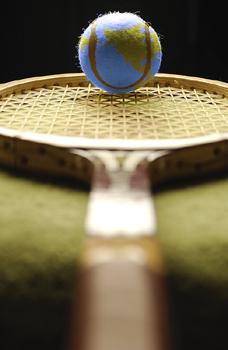How to Position for the Return of Serve
 On the return, it’s common to stand where the singles sideline and baseline meet. But if your opponent can’t serve out wide well, move closer to the center.
On the return, it’s common to stand where the singles sideline and baseline meet. But if your opponent can’t serve out wide well, move closer to the center.
Have you ever wondered why players stand near the intersection of the singles sideline and the baseline to return serve? Generally, this position places the returner halfway between a server’s two most dangerous serves: the one down the center service line and the one out wide. That positioning makes sense at the highest levels of the game, but the truth is that few players below the 5.0 level can serve to all parts of the service box with equal effectiveness. So why position yourself to cover serves that your opponent can’t hit? Next time you play, try to:
ADJUST YOUR POSITION
Most recreational players have clear preferences for where they like to place their serves. Pay attention to your opponent’s serves and adjust your position accordingly. For example, few intermediate players can hit effective serves out wide. If you’re faced with such a player, stand a foot or two toward the middle of the court.
PRESSURE THE SERVER
By adjusting your position on the return of serve to match the server’s abilities, you’re sending two messages. First, you’re letting your opponent know that you’re paying attention. And second, you’re telling him to beat you with his worst serve. Both messages are sure to pile on the pressure. On big points, especially when your opponent has to deliver a second serve, shifting your position can be enough to force him to hit a weak serve or a double fault.
Article by Tony Lance, Photos by Manuela Davies/Propix – Tennis.com
About this entry
You’re currently reading “How to Position for the Return of Serve,” an entry on Passion for Tennis
- Published:
- April 20, 2008 / 8:58 pm
- Category:
- Improve your Return of Serve
- Tags:
- Return Instruction

No comments yet
Jump to comment form | comment rss [?] | trackback uri [?]